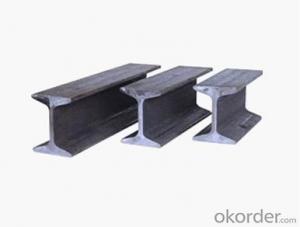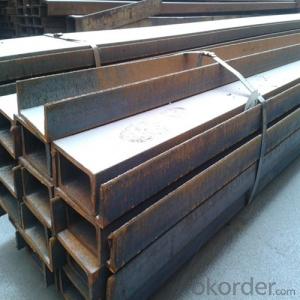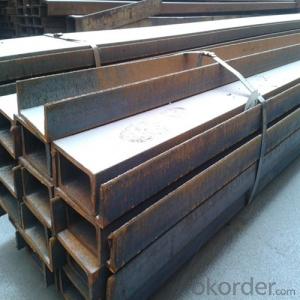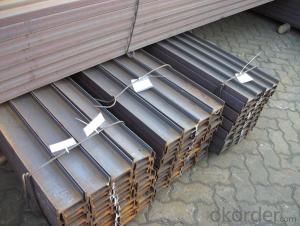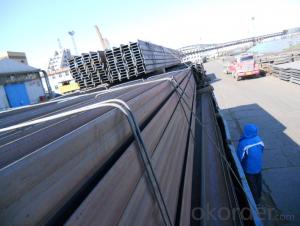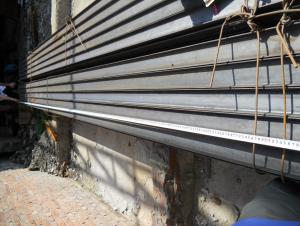Stainless Steel I Beam/I Beam Steel 2015 New Competitive
- Loading Port:
- Nanjing
- Payment Terms:
- TT OR LC
- Min Order Qty:
- 4000 PCS
- Supply Capability:
- 30000 PCS/month
OKorder Service Pledge
Quality Product, Order Online Tracking, Timely Delivery
OKorder Financial Service
Credit Rating, Credit Services, Credit Purchasing
You Might Also Like
2015 New Competitive Stainless Steel I Beam Details
| Leg Height: | 68-180mm | Depth: | 100-500mm | Standard: | BS,JIS,ASTM,DIN,EN,GB,AISI |
| Grade: | A36 - A572 | Place of Origin: | China (Mainland) | Brand Name: | Pangang |
| Model Number: | Q235 | Application: | Construction | Surface: | Smoonth |
Packaging & Delivery
| Packaging Detail: | According To Export's Demand Or Customer's Requires |
| Delivery Detail: | In 10 -20 days |
Product Basic Information:
| Material | Q195,Q235,Q345, Grade D,SS400,S235JR,1.0038,304,316,316L,201,202,410,420,ETC |
| Standards | GB/T 13793-1992 ,ASTM,JIS,EN 10025 ETC |
| Origin place | Made In China |
| Delivery Condition | Hot rolled |
| Surface require | Black,Hot Dipped Galvanization,Polish |
| Packing | 1.Seaworthy Packing 2.Wooden Case 3.Carton,Woven Bag Or At Client's Requires |
| Delivery time | In 10-30 days |
| Trade Term | EXW,FOB,CIF |
| Payments | T/T or L/C at sight |
| Port | China main Port,such as shanghai,Dalian,Shenzhen port. |
| MOQ | 1 Ton |
| Product Advantages | 1.Very Fast Delivery Time 2.High Quality And Reasonable Price 3.Sizes Are Enough 4.Many In stocks In warehouse 5.Provide The Sample For Free |
2015 New Competitive Stainless Steel I Beam Pictures
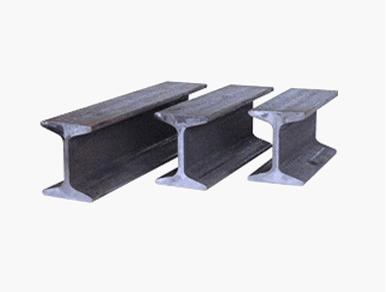
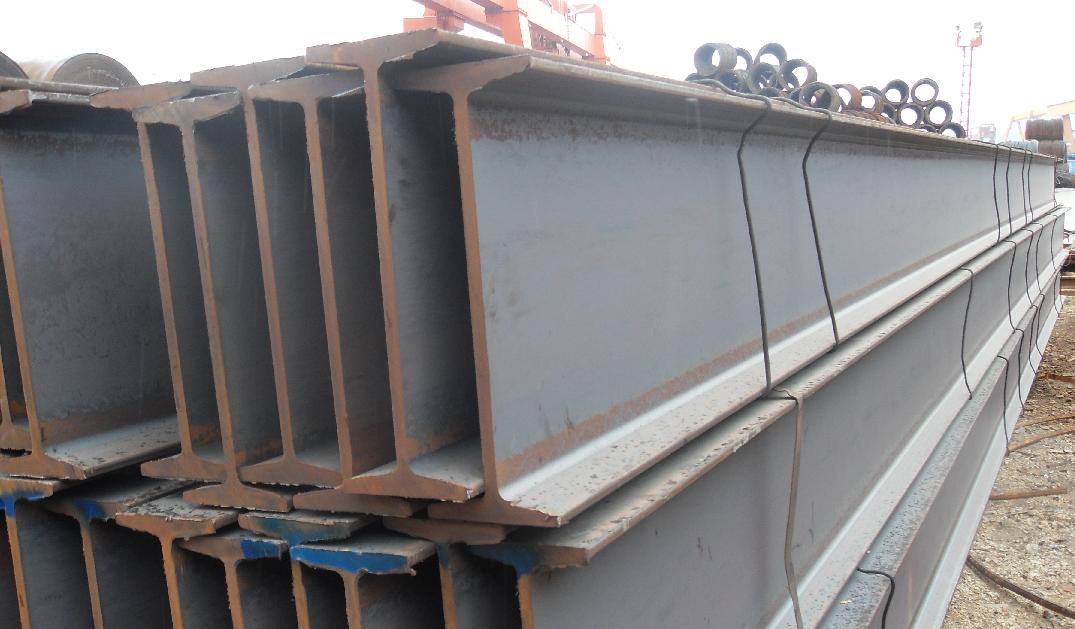
- Q: How do steel I-beams perform in earthquake-prone areas?
- Steel I-beams are widely used in earthquake-prone areas due to their excellent performance during seismic events. The inherent strength and ductility of steel make I-beams highly resistant to the lateral forces generated by earthquakes. Their ability to flex and dissipate energy helps absorb and distribute seismic forces, minimizing structural damage and reducing the risk of collapse. Additionally, steel I-beams can be designed to meet specific seismic codes and requirements, further enhancing their performance in earthquake-prone areas.
- Q: Can steel I-beams be used for mining applications?
- Indeed, mining applications can make use of steel I-beams. Given their robustness and durability, steel I-beams find frequent application within the mining industry. Their utility spans supporting tunnels, underground structures, and mine shafts. The resilient construction of steel I-beams equips them to endure the immense loads and challenging environments often encountered in mining operations. Furthermore, the adaptability and ease of fabrication of steel I-beams enable them to be tailored to meet precise mining specifications, thus rendering them a favored selection within the industry.
- Q: What are the different types of steel I-beam profiles available?
- There are several different types of steel I-beam profiles available, including standard, wide flange, and H-beam. Standard I-beams have a tapered flange, while wide flange I-beams have a wider flange and are often used in larger structural applications. H-beams have a wider flange than standard I-beams and are commonly used in construction projects that require a high load-bearing capacity.
- Q: Can steel I-beams be used in theater stage construction?
- Yes, steel I-beams can be used in theater stage construction. Steel I-beams provide strong structural support, making them suitable for use in large-scale theater stages and platforms. They can withstand heavy loads, such as sets, props, and equipment, ensuring the safety and stability of the stage. Additionally, steel I-beams can be easily customized and fabricated to meet specific design requirements, allowing for flexibility in stage construction. Their durability and long lifespan make them a popular choice in theater stage construction, as they can withstand the demands of frequent use and provide a solid foundation for various performances and productions.
- Q: How do steel I-beams perform in terms of stiffness and rigidity?
- Steel I-beams are known for their exceptional stiffness and rigidity, making them an ideal choice for structural applications. The unique design of I-beams, with a vertical web connecting the top and bottom flanges, allows them to efficiently distribute loads and resist bending and deflection. In terms of stiffness, steel I-beams offer remarkable resistance to deformation under applied loads. The vertical web acts as a solid support, preventing the beam from sagging or bending excessively. This stiffness ensures that the beam maintains its shape and structural integrity, even under heavy loads or harsh environmental conditions. Rigidity refers to the ability of a material to resist deformation or bending. Steel I-beams exhibit high rigidity due to their composition, which includes a combination of iron and carbon. This combination creates a strong, rigid material that can withstand significant forces without experiencing excessive deflection or deformation. Furthermore, the shape of I-beams also contributes to their excellent stiffness and rigidity. The flanges on the top and bottom of the beam provide additional strength and resistance against bending moments. This design allows the I-beam to efficiently distribute loads and minimize deflection, making it suitable for applications that require stable and rigid structures. Overall, steel I-beams are renowned for their outstanding stiffness and rigidity. Their unique shape and composition make them highly resistant to bending and deformation, enabling them to provide reliable support and structural integrity in a wide range of applications, including building construction, bridges, and industrial structures.
- Q: Can steel I-beams be used in curved structures?
- Yes, steel I-beams can be used in curved structures. They can be manufactured in curved shapes to accommodate the design requirements of curved constructions.
- Q: What are the common steel finishes for I-beams?
- The common steel finishes for I-beams include mill finish, hot-dip galvanized, and painted finishes.
- Q: Can steel I-beams be used for cantilever structures?
- Yes, steel I-beams can be used for cantilever structures. Cantilever structures are designed to be supported at one end while the other end is free, and steel I-beams are commonly used in construction for their strength and ability to bear heavy loads. The I-beam's shape provides excellent structural support, making it suitable for cantilever applications where an overhanging beam is required.
- Q: What are the load-bearing capacity of rectangular and I-beam steel sections of the same size?
- Therefore, if the stability is not considered, the bearing capacity of I-beam is large.But the stability of the rectangular steel is better, it is not easy to lose stability.
- Q: Do I need to stagger a distance between the wing plate splice and the web splice at the butt joint of the I-beam?
- In order not to force the steel column or the steel beam on the same plane, that is, the same weld plane is subjected to force
Send your message to us
Stainless Steel I Beam/I Beam Steel 2015 New Competitive
- Loading Port:
- Nanjing
- Payment Terms:
- TT OR LC
- Min Order Qty:
- 4000 PCS
- Supply Capability:
- 30000 PCS/month
OKorder Service Pledge
Quality Product, Order Online Tracking, Timely Delivery
OKorder Financial Service
Credit Rating, Credit Services, Credit Purchasing
Similar products
Hot products
Hot Searches
Related keywords
